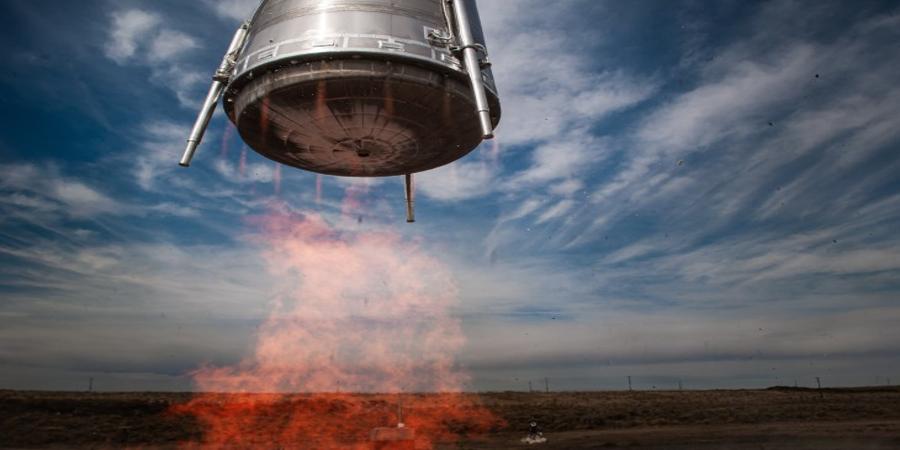Stoke Space, a startup that’s taking an unconventional approach to rocket design, successfully completed a key test of its second stage prototype, bringing the company one step closer to flying a fully reusable launch vehicle.
The prototype, called “Hopper2,” executed a 15-second test flight during which the vehicle flew to a height of around 30 feet and vertically landed slightly down range. The second stage “hop” test was a crucial assessment of the vehicle’s avionics, software, and ground systems, as well as the performance of the stage’s unique oxygen-hydrogen rocket engine. Unlike other nozzled engines, the one on Stoke’s second stage is integrated fully with the vehicle and operates as a distributed system, with thrusters that ring the circumference of the second stage.
“The whole thing is a testbed around that premise [of the engine design],” Stoke Space co-founder and CEO Andy Lapsa said. “That’s what this test program was all about: does this idea work and can we control the vehicle using some of these new and different techniques?”
“All the questions that we had to ask […] those are all resounding yeses,” he added.
Yesterday’s flight, which took place at Stoke’s test facility near the Grant County International Airport in Moses Lake, Washington, concludes the Hopper prototype development cycle. That means the architecture of that vehicle, which stands at around 6 meters tall and 4 meters in diameter without a payload fairing, is essentially complete.
🐇 pic.twitter.com/2EXvwX1IH0
— Stoke Space (@stoke_space) September 18, 2023
Now, the company is turning its attention to building out the rest of the orbital system: the first stage, the first stage engines, the ground systems and launch complex. (The U.S. Space Force allocated Launch Complex 14 for use by Stoke Space earlier this year.) The 90-odd person company clearly has its work cut out for them.
“The first step on our journey was figuring out what a fully reusable upper stage and space vehicle looks like,” Lapsa explained. “We really believe that it’s hard to build the rest of the vehicle until you know an answer. So that’s why a lot of our focus so far has been on the reusable second stage.”
Still, the company has made remarkable progress since it was founded in 2019. The two founders – Lapsa and Tom Feldman, CTO – both worked at Blue Origin before striking off on their own. Over the past four years, the pair has raised around $75 million dollars, including a $65 million Series A led by Bill Gates’ Breakthrough Energy Ventures. With that funding, they’ve put together nearly everything from scratch, including a 21,000-square-foot manufacturing facility and testing infrastructure.
If all goes to plan, Stoke will conduct its first orbital flight test in 2025.
“We are pushing really hard to get to orbit by 2025,” Lapsa said. “There are some interesting opportunities there to do things even before that. That’s our target. We’re going to step back from this a little bit, recalibrate, crystallize our plan. We do have a plan. We’re just going to get more energy behind it and then get back to knocking off milestones.”
Source @TechCrunch



